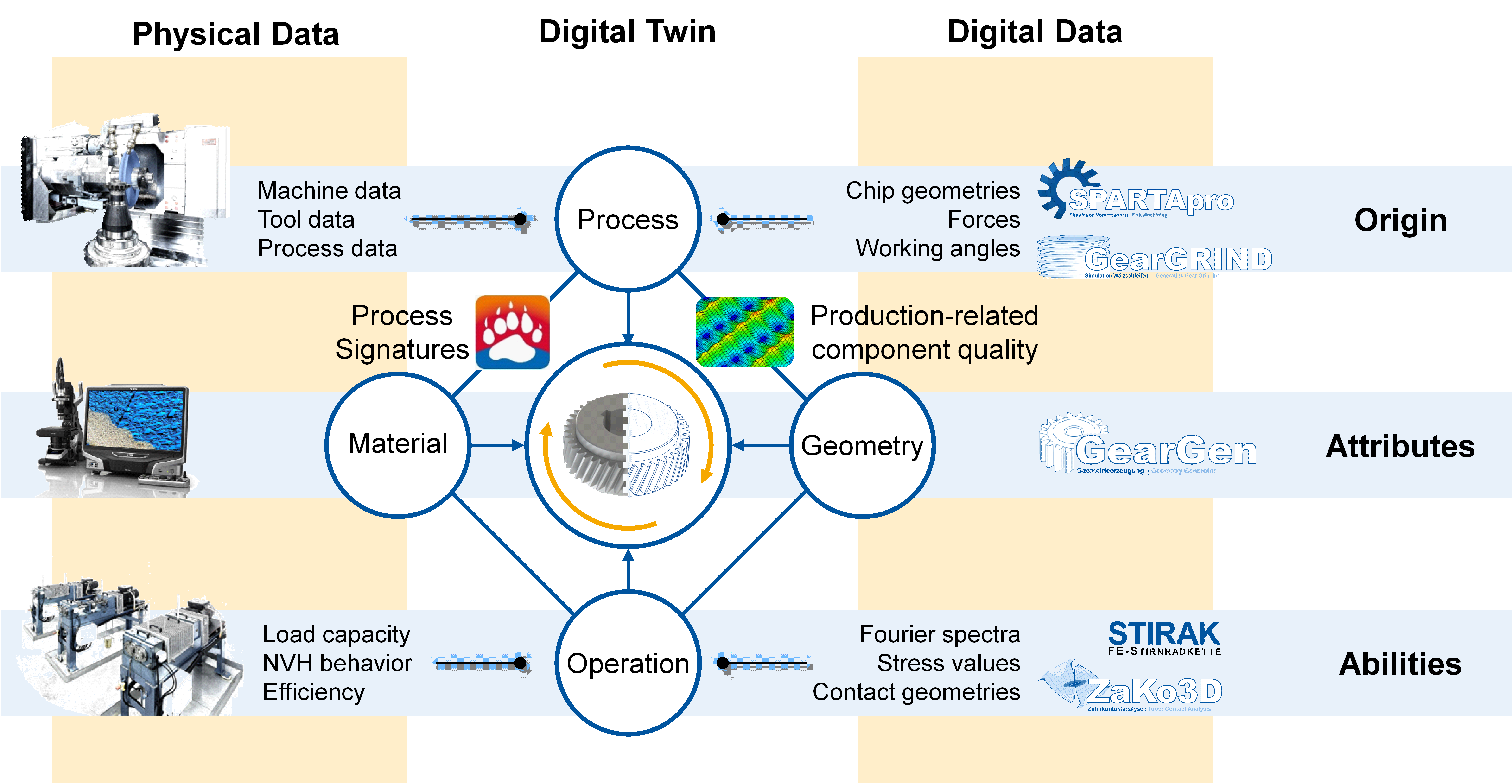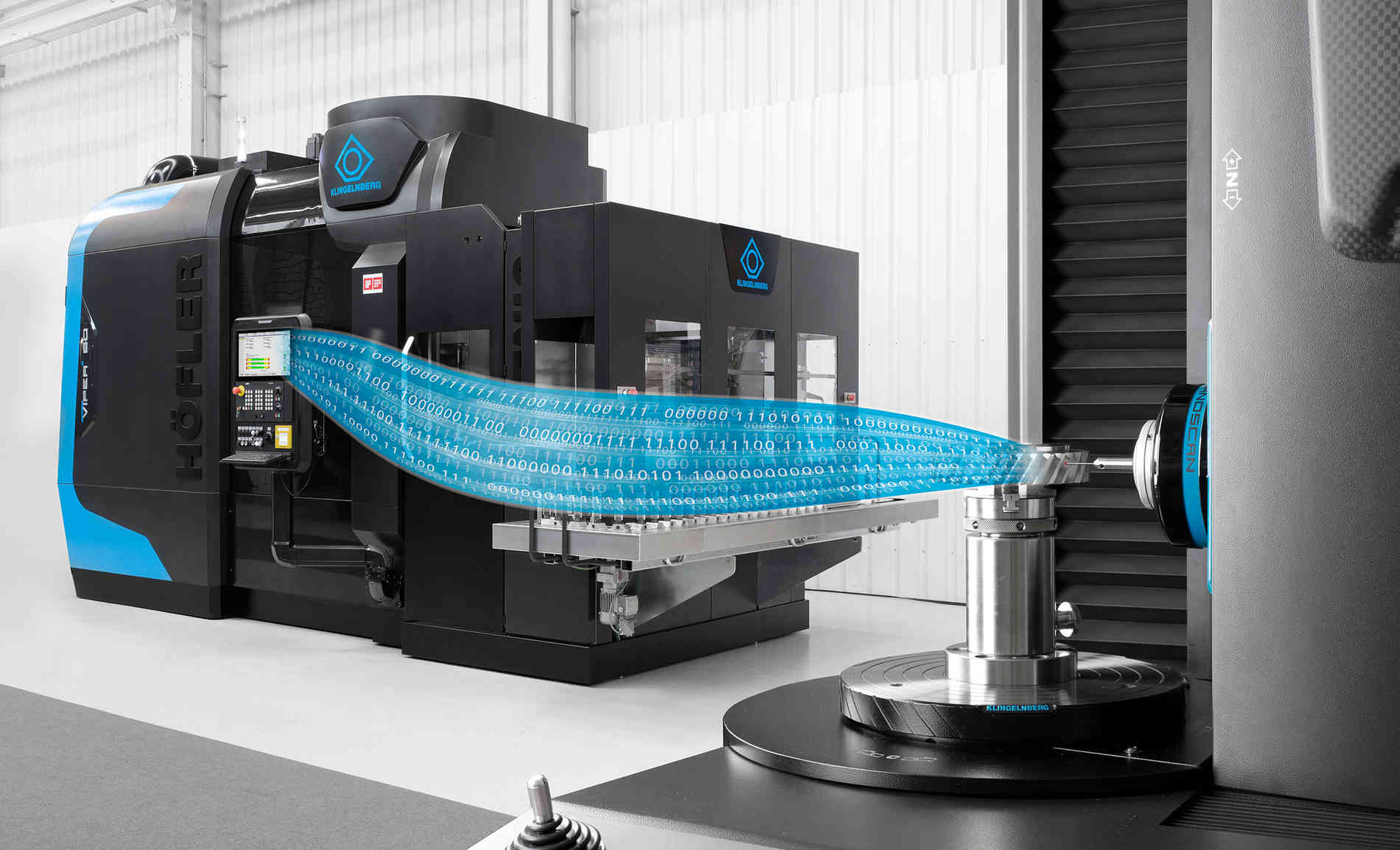Functional Backtracing in Process Chains
A Model-and Data-Based Approach
In aerospace applications, gears represent a safety-critical machine element. The production-related component quality after the manufacturing process must therefore be guaranteed in every case. Without continuous data analysis in the manufacturing process, errors are not necessarily detected immediately and can therefore lead to reduced component performance.
The concept of the digital twin is based on the idea of complete traceability of the manufacturing process. This requires data that is already generated during the manufacturing process but remains largely unused. Physical data (e.g. servo traces) as well as tool and process data, generated along the process chain, can be linked with digital data from manufacturing simulations. This procedure enables model and data-based analyses for the individual process steps as well as across the process chain. Data-based models complement empirical and, or analytical models to improve the prediction accuracy and can take into account influences that are currently not covered by established models.
In this lecture, the current starting situation should first be clearly defined. Using practical examples, we will discuss how production chains are structured today and what problems and challenges this brings with it. The presentation of the initial situation is followed by the derivation of the need for optimization: Where do we stand now, where do we want to go?
The question of how digitization and data-based models contribute to the optimization of the process chain and how a complete and individual traceability can be guaranteed will then be investigated. This includes the clarification of input variables (e.g. footprint of the machine) as well as the individual and cross-process chain process description (data-, model- and, or phenomena-based).
How machines can learn in the future on the basis of the generated data and react autonomously to process changes will be further discussed in the outlook of the lecture.
*English subtitles available
Functional Backtracing in Process Chains
A Model-and Data-Based Approach
In aerospace applications, gears represent a safety-critical machine element. The production-related component quality after the manufacturing process must therefore be guaranteed in every case. Without continuous data analysis in the manufacturing process, errors are not necessarily detected immediately and can therefore lead to reduced component performance.
The concept of the digital twin is based on the idea of complete traceability of the manufacturing process. This requires data that is already generated during the manufacturing process but remains largely unused. Physical data (e.g. servo traces) as well as tool and process data, generated along the process chain, can be linked with digital data from manufacturing simulations. This procedure enables model and data-based analyses for the individual process steps as well as across the process chain. Data-based models complement empirical and, or analytical models to improve the prediction accuracy and can take into account influences that are currently not covered by established models.
In this lecture, the current starting situation should first be clearly defined. Using practical examples, we will discuss how production chains are structured today and what problems and challenges this brings with it. The presentation of the initial situation is followed by the derivation of the need for optimization: Where do we stand now, where do we want to go?
The question of how digitization and data-based models contribute to the optimization of the process chain and how a complete and individual traceability can be guaranteed will then be investigated. This includes the clarification of input variables (e.g. footprint of the machine) as well as the individual and cross-process chain process description (data-, model- and, or phenomena-based).
How machines can learn in the future on the basis of the generated data and react autonomously to process changes will be further discussed in the outlook of the lecture.
*English subtitles available



